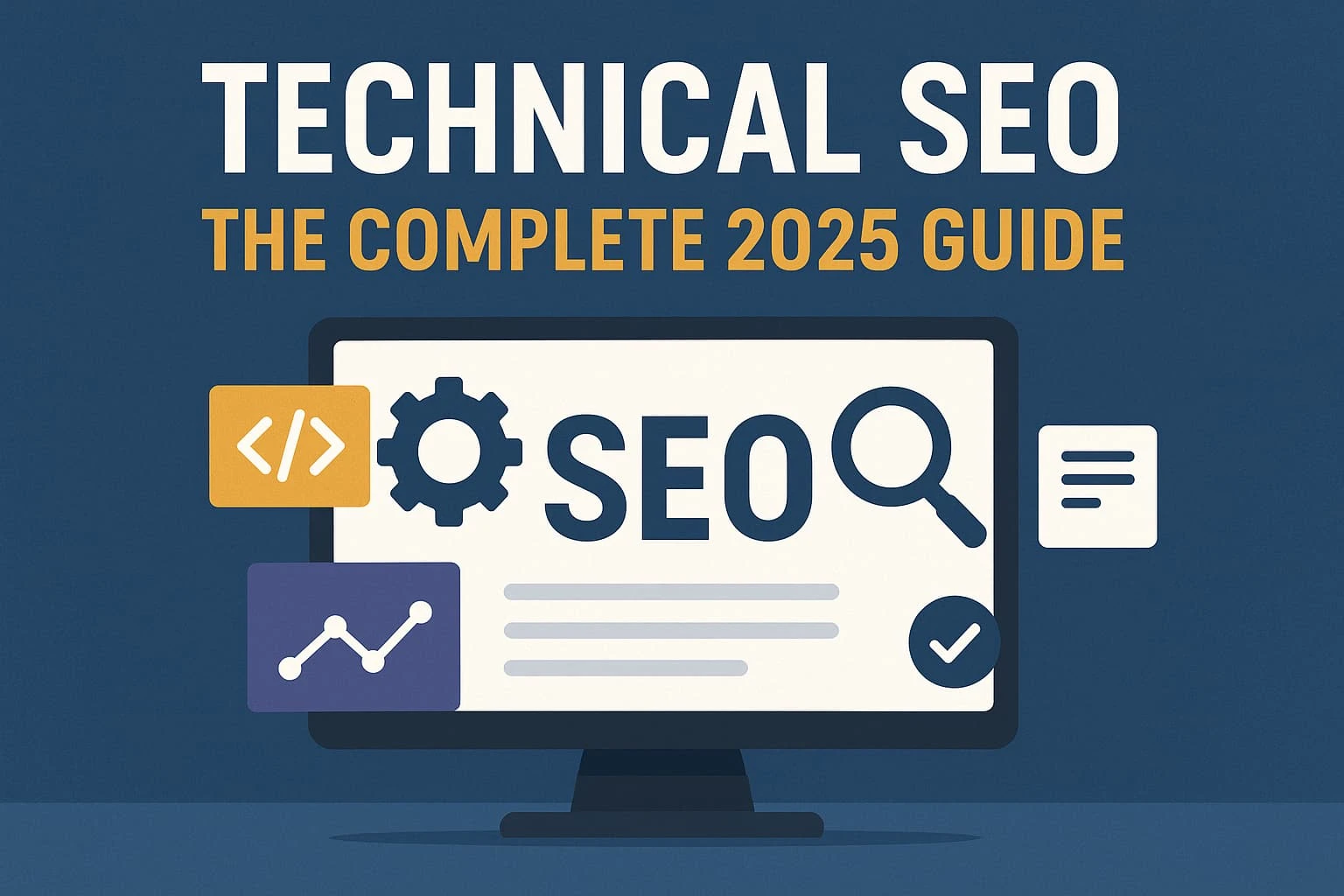Every day, countless websites are launched with amazing content, but they fail to rank. Why? Because they are missing the most critical element of SEO: a strong technical foundation.
Technical SEO is the practice of optimizing your website's code and infrastructure to improve its crawlability, indexability, and user experience for both search engines and humans. While on-page SEO is about the words on the page and off-page SEO is about external signals, technical SEO is the engine that makes the whole system run.
This guide will demystify technical SEO, explain why it's more crucial than ever in 2025, and provide a complete checklist to audit your own site.
Why Is Technical SEO More Important Than Ever?
The rules of search are constantly changing, and what worked last year may not work today. In 2025, technical SEO is no longer a "nice-to-have"—it's a non-negotiable requirement for ranking.
- Google's AI-First Approach: With the rise of AI-powered search, Google's algorithms (like BERT and MUM) are better than ever at understanding natural language. This means they can parse and evaluate your site's structure with incredible precision. A messy, technically flawed site is immediately flagged as low-quality.
- Core Web Vitals are a Direct Ranking Signal: Google has been clear that user experience is a key ranking factor. Core Web Vitals are a set of metrics that measure real-world user experience, and in 2025, the benchmarks are stricter. Websites that load slowly or are visually unstable face direct ranking penalties.
- Mobile-First Indexing is the Standard: In 2025, Google predominantly uses the mobile version of a site for indexing and ranking. If your mobile experience is slow or difficult to use, your site's desktop rankings will suffer as well.
How to Do Technical SEO: The 2025 Checklist
Follow this step-by-step checklist to perform a comprehensive audit and ensure your site is technically flawless.
Phase 1: Crawlability & Indexing
This phase ensures search engine bots can access and add your content to their index. If you fail here, your content will never be found.
- Check Your Robots.txt File: This file tells bots which pages they can and cannot crawl. Ensure it's not accidentally blocking any important pages from being indexed.
- Submit and Manage Your XML Sitemap: Your sitemap is a roadmap for search engines. Ensure it is up-to-date and submitted to Google Search Console to help bots discover your pages.
- Inspect for noindex Tags: Use a site crawler to check for noindex tags on pages that you want to rank. These tags are often left by developers, preventing pages from showing up in search.
- Manage Duplicate Content with Canonical Tags: If you have the same or very similar content on multiple URLs, use a canonical tag (rel="canonical") to tell search engines which one is the "master" version.
Phase 2: Core Web Vitals & Page Speed
A slow website is a red flag to both users and search engines.
- Test Your Core Web Vitals: Use Google's PageSpeed Insights to measure your performance on the three key metrics:
- LCP (Largest Contentful Paint): Measures loading speed. Your score should be under 2.5 seconds.
- INP (Interaction to Next Paint): Measures interactivity. Your score should be under 200 milliseconds.
- CLS (Cumulative Layout Shift): Measures visual stability. Your score should be under 0.1.
- Optimize Images and Videos: Compress all images and use next-gen formats like WebP or AVIF. Implement lazy loading for all media to ensure they only load when the user scrolls to them.
- Minify Your Code: Remove unnecessary characters from your JavaScript, CSS, and HTML files to reduce their size and improve load times.
Phase 3: Site Structure & Navigation
A logical site structure helps search engines understand the hierarchy of your content.
- Fix Broken Internal Links: Use a crawler tool to identify and fix any internal links that return a 404 error. This improves user experience and helps distribute link equity.
- Implement an Internal Linking Strategy: Connect related content on your site. This creates a logical hierarchy and helps search engines understand the relationships between your pages, strengthening your authority on a topic.
- Use a Simple URL Structure: Your URLs should be short, descriptive, and easy to read. Example: yourwebsite.com/technical-seo-guide is much better than a URL with random characters.
Phase 4: Security & Structured Data
These are critical trust signals that your site is safe and reliable.
- Use HTTPS: An SSL certificate provides a secure connection for users and is a long-standing, direct ranking factor.
- Implement Schema Markup: Use structured data (schema markup) to help search engines understand the context of your content. This can help you earn rich snippets, like star ratings or an FAQ section, in the search results.
Conclusion
Technical SEO is not a one-time task; it's a continuous process of maintenance and improvement. By integrating this checklist into your regular website routine, you are not just fixing problems—you are building a robust, high-performance website that is ready to compete and win.
